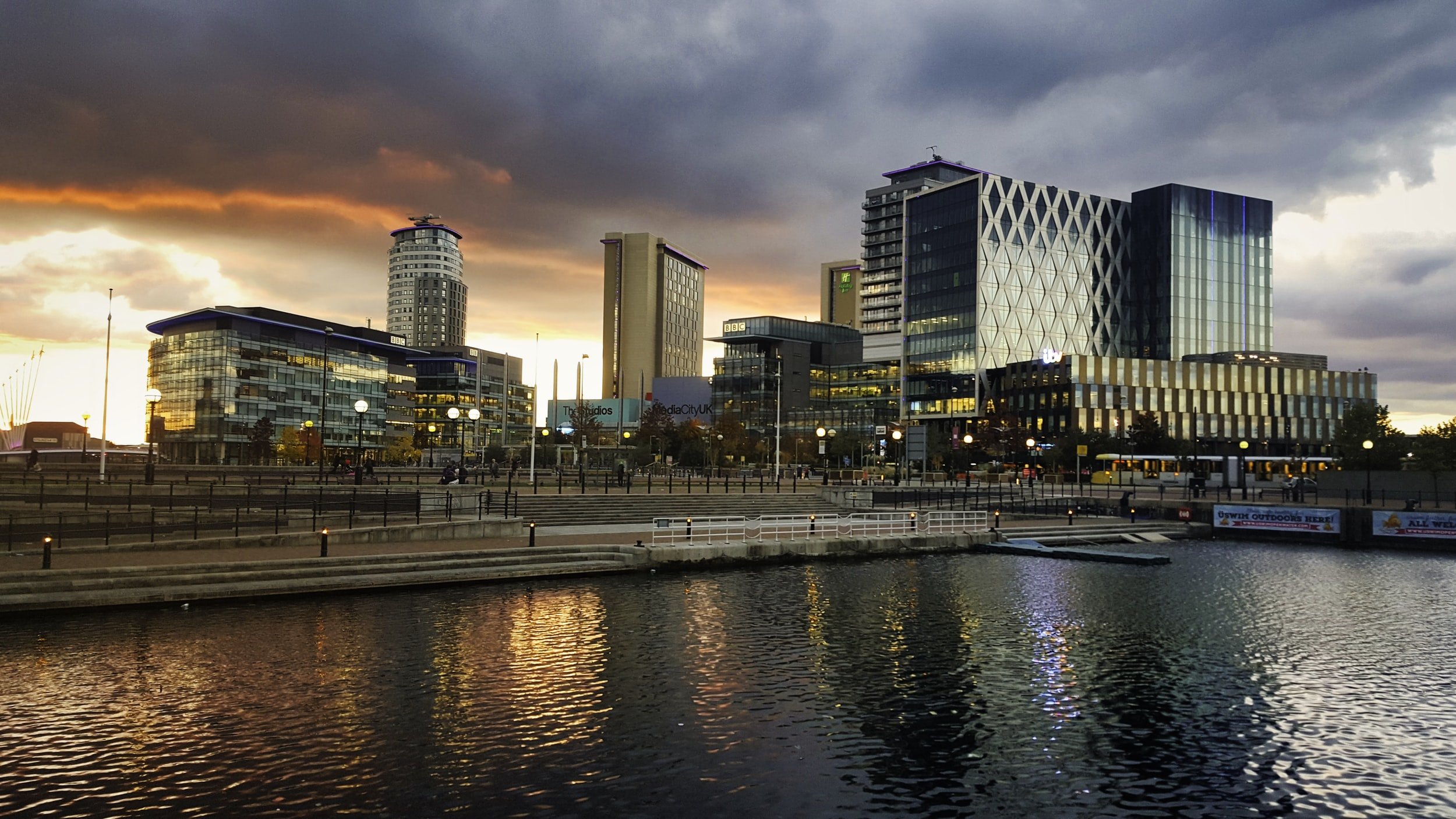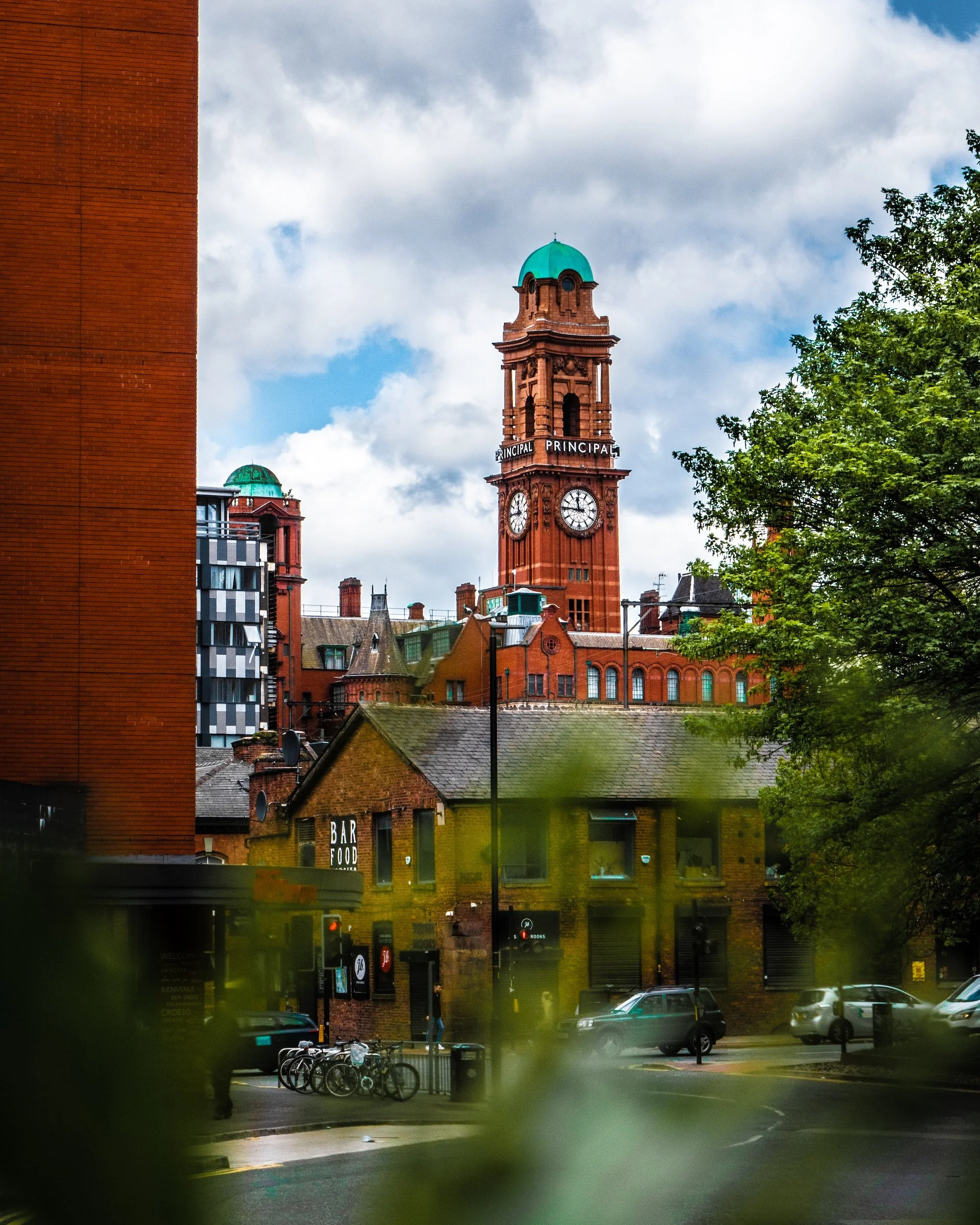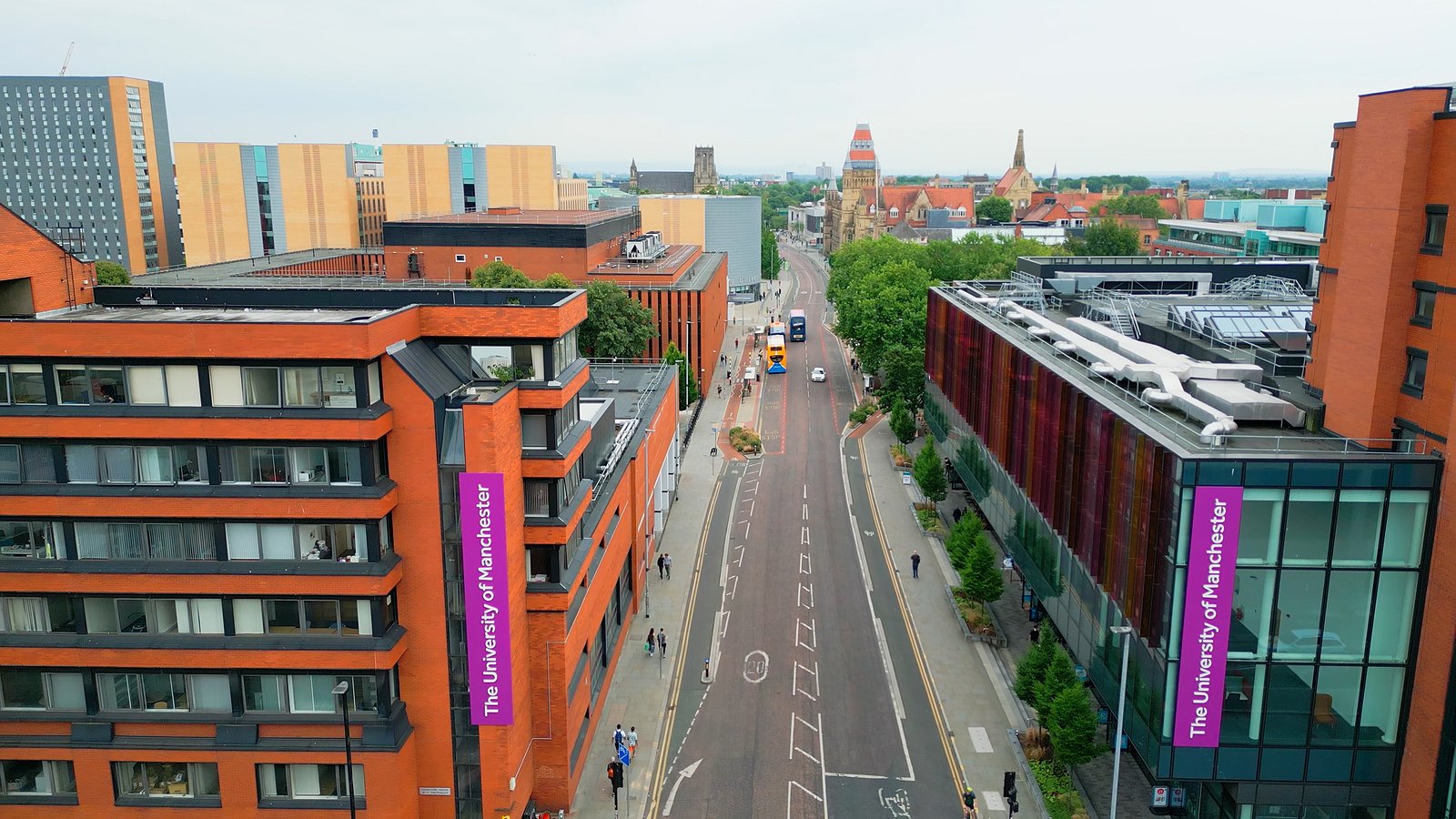
Property Investment in Manchester A Guide
Download This FREE Guide
Why not download this guide onto your device, and take your time to digest all that Manchester has to offer whilst on the go!
Your FREE Guide to Property Investment in Manchester
When it comes to property investment, Manchester is undoubtedly one of the UK’s most popular and best-known locations. In recent years, it has attracted large numbers of developers and buy-to-let investors, all seeking to capitalise on its obvious economic success.
Here, in this guide, we’ll set out some of the reasons why Manchester is such a popular choice and why, in recent years, it has consistently proven itself to be one of the best-performing property investment markets in the country.

Why Invest in Manchester?
In choosing an ideal location for a buy-to-let property purchase, investors will consider many factors. A good record of capital growth is one of the more obvious; yield is another.
Another positive indicator is a fast-growing economy – because that will tend to create jobs and pull in more people from outside the area. This, in turn, adds to demand for rental accommodation. Moreover, a strong economy usually manifests in rising standards of living and tenants with more disposable income, which is good news for investors with higher-quality properties to let.
A rising population is also a welcome sign, for obvious reasons, as is a thriving education sector. Universities are an important source of rental demand and, through a combination of local investment and business support and incubation schemes, they often play a pivotal role in stimulating local economic growth.
Plenty of destinations offer some of these qualities, but few offer them all. Of those that do, Manchester is one of strongest, and that makes it a clear and logical choice for any property investor’s shortlist.
Inward Investment in Manchester
Over recent years, Manchester has been witnessing massive inward investment on the part of both the public and private sectors. Large employers such as Amazon, TalkTalk, Hewlett Packard and Jaguar Land Rover have all created new jobs in the area as a result of relocations and expansion plans, and new construction projects have been springing up across the city. This has been fuelled in part by a huge surge in Manchester’s city centre population, which stood at 10,000 in 2008, and which could reach ten times that figure within the next few years.
Developers have not been slow to recognise the opportunities this has created, and literally billions are being invested in new office, retail and leisure projects. According to ONS figures for 2018, construction output in and around Manchester was ten times greater than the UK national average, and since then, the pace of change has not slowed one bit.
-
an £800 million business and entertainment development in Manchester’s Northern Quarter;
-
a £1.4 billion development that is creating new office, retail and leisure space not far from Manchester’s Piccadilly Station
-
a £2 billion innovation district being created by the University of Manchester
-
a £741 million residential development on Deansgate
-
now the subject of a £328 million restoration programme
-
a £1.35 billion construction scheme that will create new homes, office space, leisure facilities and a new arts and culture venue
-
A new £350 million Metrolink line to the Trafford Centre
-
a £1 billion expansion programme
These, of course, are just a few examples, but they go some way to illustrating the scale of Manchester’s economic ambitions. The consequences of all this urban regeneration should include more jobs, improved living conditions and, in all likelihood, steadily rising property values.
Manchester’s Economy
Manchester’s economy is one of the largest in England and, according to some reports, it is growing at a rate that’s 4 times faster than the UK average. That growth isn’t evenly spread across the whole of Greater Manchester – much of it clusters around the city centre and hotspots such as Salford – but when you consider that the ten metropolitan boroughs have a combined economic value of nearly £75 billion (GVA) per annum, it’s clear that a huge amount of money is pouring in.
Overseas investors are a major driver of that growth, financing a range of new projects including office, retail and residential developments. Likewise, the public sector is helping to build momentum by funding important infrastructure improvements and creating new sites for development.
In economic terms, Manchester has become something of a juggernaut and its continued progress looks all but unstoppable. Its population is growing fast – expected to increase by 100,000 by 2026 – with much of that growth (around 40,000 people) expected to occur within the city centre. Job creation figures are also amongst the best in the country – forecast to increase by approximately 65,000 by 2040.
All these thousands of incomers will inevitably require places to live, so rental demand in Manchester should remain very strong for the foreseeable future. That, in turn, should be good news in terms of both yields and sustained capital growth.
Business Growth in Manchester
It should come as no surprise that in an environment such as this, Manchester’s business population is thriving. According to figures published by ONS in 2019, 22,630 enterprises were operating in Manchester, with particularly strong growth in the digital and creative industries. That marks a pronounced upturn since 2014, when the number stood at just 15,060.
The success of Manchester business has had a predictable effect upon local jobs. According to report produced for the Digital Economy Council in December 2021, the number of tech vacancies rose by over 164% during the course of the year. Moreover, in January 2022, the city-region’s inward investment agency, MIDAS, reported that Greater Manchester had created a record 5,080 new jobs in 2021, which exceeded the 2019 (pre-pandemic) figure by 41%. In 2022, growth in the financial sector market added an estimated £99 million to the Greater Manchester economy, with a corresponding upturn in employment.
In February 2023, the Greater Manchester Local Enterprise Partnership reported that “Manchester's economy is expected to see annual average growth of +2.5% between 2024 and 2026, comfortably outpacing the national growth rate (+2.1%)… By 2026, GVA in Manchester’s local economy is expected to be +£2bn larger than in 2022.”
In the same report, the LEP states: “Manchester is expected to record the fastest rate of employment growth of any UK town or city from 2024 to 2026, with job numbers in the city forecast to grow +1.8% per year over the period. This is above the national average as UK jobs are expected to grow by around +1.3% a year.”
Major inward investments have recently been announced by:
-
creating 1,250 jobs spread across Manchester, London, Cambridge and Edinburgh
-
a £500m investment, creating an estimated 5,000 jobs over 5 years
-
(fashion brand) moving 300 jobs to One Central Street in the city centre
-
opening a new studio in Enterprise City that will create over 700 jobs by 2023, and over 1,000 in the next 5 years
-
over 200 jobs to be relocated to Manchester by 2025
-
which opened its £93m city centre campus in September 2022
-
who will be investing £4bn over 20 years into the Victoria North Development
-
created 180 jobs in 2021
-
creating over 300 new jobs in Greater Manchester
-
creating 200 new jobs in the field of artificial intelligence
-
creating 4,000 jobs over three years at its newly-launched technology hub at 1 Spinningfields
-
180 new jobs in Salford
-
now creating over 100 new customer service jobs in the city

Growth Sectors in Manchester
Taken as a single sector, ‘business, finance and professional services’ account for well over 190,000 jobs in Manchester and represent one of its most important and profitable industries. It continues to grow as more well-known employers settle in the metropolitan borough and, by 2025, it is expected to create a further 3,000 FTE jobs. A report published in March 2023 by Whitecap Consulting suggested that the FinTech sector alone would generate £1 billion for the Greater Manchester economy in 2023.
The creative and digital industries are producing some of Manchester’s fastest-growing enterprises – in fields such as e-commerce, security, 3D graphics, animation and a whole host of media-related specialisms. The sector employs around 65,000 workers and the number is tipped to increase by 5,000 by 2025. Its economic value is expected to rise by over 40% over the same period, which would put the sector in Manchester’s top three for growth.
According to a recent report by Oxford Economics, which considered growth projections between 2015 and 2025, the sectors likely to produce the biggest growth in employment across Manchester include:
Construction: 51% growth
Business, financial and professional services: 29%
Cultural, creative and digital: 23%
Other strong performers include advanced manufacturing (which saw the creation of over a thousand jobs in 2019), together with architecture, publishing, life sciences, healthcare and tourism.
Employment growth is a powerful driver of new demand for rental accommodation, so these are all trends with important and encouraging implications for buy-to-let property investors.
Download This FREE Guide
Why not download this guide onto your device, and take your time to digest all that Manchester has to offer whilst on the go!

Manchester’s Tourism Market
According to an October 2019 report by Marketing Manchester for Manchester City Council, tourism is worth £4.5 billion to the city economy every year, and, before the pandemic, had been growing at a rate of roughly 10% per annum. In 2019, Manchester welcomed 4.8 million staying guests and 59 million day-visitors, who collectively helped to sustain over 50,000 local jobs. More generally, Greater Manchester’s tourism sector is worth £8.4 billion and it sustains around 96,000 jobs.
This importance is recognised in the (delete “new”) Greater Manchester Business Tourism Strategy 2019 –2025, which sets out some ambitious goals. These include a plan to achieve a 40% increase in the value of the business conference market by 2025, “…generating an additional £345 million for the regional economy and supporting a further 14,000 jobs.”
Marketing Manchester has also highlighted plans to increase consumer tourism through a mix of domestic and international promotions. The objective is to secure an additional £27 million of domestic visitor spending, and to increase foreign tourist spending by £35 million through a series of marketing campaigns targeted at China, the Gulf States, India and the United States.
The city’s appeal has received recent boosts from major projects including:
· CO-OP Live – a 23,500-capacity venue currently under construction at Manchester’s Etihad Campus.
· Factory International – a venue for dance, music, exhibitions and more, and home to the run Manchester International Festival (MIF).
· A host of new bars, clubs and restaurants.
Manchester is undeniably one of Britain’s most popular tourist destinations and rising visitor numbers augur well for landlords with an interest in profitable rental options such as short-stay accommodation and serviced apartments. Often highly rewarding, such investments remain a credible choice while visitor numbers continue to rise.
Manchester’s Sporting, Social and Cultural Scene
Manchester’s sporting pedigree is world famous, with Manchester United in particular being a name recognised by football enthusiasts across the globe. But there are many other sporting attractions besides Manchester United and Manchester City. One of the best known is the Old Trafford Cricket ground, home to Lancashire County Cricket Club, but there are other venues popular amongst fans of basketball, ice hockey, cycling and athletics.
The total economic value of all this activity is hard to gauge accurately, though a study in 2013 estimated that football alone generated £330 million per annum for the city’s economy, and underpinned approximately 8,500 jobs. The same report found that whenever Manchester United or City played a home game, hotel occupancy rose from its usual level of 70% to around 90%.
What is clear is that sport is an important and valuable source of tourism and rental demand, both in the city centre and in many of Greater Manchester’s other boroughs: Salford, Bolton, Wigan, Trafford and so on.
The city’s visitor numbers are also buoyed up by Manchester’s vibrant social and cultural scene. It boasts a wealth of bars, cafes and restaurants, retail destinations, theatres, museums, galleries, libraries and leisure venues that attract millions of day-visitors all year round. A vibrant nightlife ensures that the city stays economically active well beyond office hours, and more generally, visitors are drawn in by a packed calendar of food and music festivals, live performances, public displays and family entertainments. Again, these are good signs for property investors; Manchester’s status as a major regional destination for sport and culture helps to sustain a strong market for short-stay rentals and serviced accommodation.

Manchester’s Housing Market
Taking all of the foregoing information into account, it’s easy to see why so many people regard property investment in Manchester as a logical and low-risk choice. In recent years, it has been an exceptionally strong performer and all the signs point to continued growth.
According to figures published by Zoopla in April 2023, average annual house price growth across Manchester stood at an impressive +5.8, which is the third highest in the UK. That’s certainly a good rate of growth when compared to the UK-wide average of +4.1%, but as a mean figure for the whole of the city, it conceals a very chequered pattern.
The reality is that Manchester’s housing market varies considerably between boroughs and even between individual neighbourhoods. The city boasts some of the best-performing locations in Britain, but it is also home to some of the country’s most deprived and troubled wards. Careful choice is everything here, so it pays to focus down to a much more granular level. But to do that, and before making any decisions about where to invest, it’s important to think about your property investment strategy. In other words, what are your priorities in terms of capital growth, yield, risk and target market?
Buy-to-Let Investment in Manchester
Manchester is one of the country’s most popular destinations for buy-to-let property investment. In recent years, while landlords in other parts of the UK have been licking their wounds after the September 2022 mini-Budget and a series of government-imposed tax hikes, Manchester has been seeing more and more investors buying up rental property. And significantly, this has been happening at every scale, from individual landlords buying single units, to institutional investors funding multimillion-pound construction projects.
The city’s attraction for buy-to-let investors lies in its all-round strength: good price growth, good yields, a rising population, strong rental demand and credible prospects of continued economic expansion.
The UK housing market saw only modest capital growth prior to 2020, constrained by uncertainty surrounding Brexit and only a very slow improvement in average disposable incomes. As a result, while there were a few isolated examples of big price gains, most buy-to-let property investors were forced to lower their expectations.
That changed in 2020, when price growth accelerated UK-wide. Everywhere except central London, it seemed, prices soared. Nevertheless, there were still notable regional differences, and perhaps unsurprisingly, Manchester was one of the UK’s best performers. According to Hometrack’s City House Price Index, Manchester ranked amongst the country’s top three locations for price growth in the 12 months to February 2022, surpassed only by Liverpool and Nottingham. Since then, Manchester has retained its top-three status. In April 2023, for example, Zoopla indicated that only Nottingham and Birmingham had delivered faster rates of capital appreciation.
On the measure of price growth, Manchester is obviously a strong contender, and when it comes to rental values and yield, the city delivers equally impressive figures. For example, the SpareRoom UK Rental Index for Q1 2023 found that rental values had risen by +20% over the course of 2022. That took the average room rent from £533 in Q1 2022, to £637 by Q1 2023.
With respect to yields, rising property values have kept Manchester from the UK top-spot for a number of years now, but there is no doubt that well-chosen properties are performing very well.
Recent figures from PropertyData suggest that some of the highest-yielding postcodes in Manchester include M14 (9.3%), M7 (7.1%) and M11 (6.6%), all some way ahead of the 4.7% typically achieved in the central M1 postcode. However, these are again just area averages; it’s important to remember that on some new off-plan projects, developers are offering buy-to-let investors rental assurances of 8% and more. This is a significant consideration for those who are considering a buy-to-let investment but who want to keep risks to an absolute minimum.
PBSA & Student Property Investment in Manchester
In any consideration of property investment in Manchester, one should recognise the importance of the student property market. The success of the city’s rental sector isn’t only based on strong economic growth, rising populations and a resilient tourist market. It is also energised by a vast student body that sustains strong and predictable rental demand, both in the city and across Greater Manchester.
Manchester has one of the largest university student populations in Europe. The University of Manchester, Manchester Metropolitan University and the University of Salford are the largest and best known, but there are other important institutions located in and around the city. Of these, the most central is the Trafford-based University Academy 92, and beyond, still within easy commuting distance, lies the University of Bolton.
Collectively, these five universities attract around 100,000 students and sustain jobs for thousands more: academics, administrators and supply chain partners.
For investors, student properties can be very rewarding. Looking at a mix of traditional rentals and purpose-built student accommodation, yields in Manchester typically vary between 6.5% and 8%, though well-chosen properties may deliver even more.
The universities also contribute a great deal to Manchester in terms of new investment and construction. In October 2019, for example, a consortium led by the University of Manchester announced a multimillion-pound investment in new research centre, called The Christabel Pankhurst Institute for Health Technology. The development has a total budget of more than £35 million.
More substantial still is the University of Manchester’s proposed ID Manchester development, a £2 billion innovation district on its North Campus. The masterplan entails the creation of 4 million square feet of mixed-use space with a view to attracting companies specialising in science, R&D and technology.
Manchester’s education sector is therefore a powerful force within Greater Manchester, and a definite asset for buy-to-let investors with property in the city.
What are Manchester’s Property Market Predictions for 2023 and Beyond?
Property investors can apply some common-sense rules when seeking a promising investment destination. A strong economy is a good indicator. Others include a rising population, employment growth, a successful education sector and a buoyant tourist market.
Manchester is strong in all these suits, so it’s understandable that so many investors and industry commentators regard the city as a good, safe bet for future investment. Partly that comes down to the numbers, but partly it’s about the general ‘buzz’ of the city; anyone who has visited recently will be well aware that Manchester is a place imbued with a strong sense of energy and optimism.
This is certainly a view shared by many big employers, developers and international investors, all of which are pouring money into Manchester. Against such a backdrop, it’s hard to offer any logical argument against the city’s credentials as a property investment hotspot.
For the remainder of 2023, few commentators are predicting positive growth in average values. That’s the result of headwinds including the cost-of-living crisis, higher personal taxation, higher mortgage costs and a continued fall in real earnings when compared against inflation. However, it’s also widely recognised that some regions will recover more quickly and more forcefully than others – and Manchester will almost certainly be among the strongest performers.
Savills’ Residential Property Forecasts for 2023 does not refer explicitly to Manchester but it expects property prices across the wider North West England to rise more quickly than the UK average. After a dip in 2023, it predicts UK-wide growth of +1.0% in 2024, but a more impressive rate of +2.5% in the North West. By 2027, it expects the national average to have risen by a cumulative +6.2%, but by +11.7% in the North West.
Similarly, rental demand is expected to continue to rise in Manchester in 2023 and beyond, for all the reasons described above. Much of that will be felt in the centre, which is forecast to see 40,000 new residents by 2025. However, it should also have a positive impact on demand in nearby commuter districts such as Bolton, Salford and Trafford.
Conventional economic theory suggests that, all else being equal, rising rental demand should tend to push rental prices upward. In parts of the city centre, average rents are already exceeding £1,000 per month, so buy-to-let investors could stand to reap significant rewards. Of course, there has to be a limit to affordability, so those rental values cannot climb too far too quickly; but if they do start to stretch beyond most tenants’ reach, then there could be a corresponding upsurge in demand for rental property in more affordable neighbouring boroughs.
In summary, Manchester has become a favourite amongst investors for good reasons. They include high yields, a fast-rising population and some of the highest rates of capital growth in the country. With employers almost queuing up to invest, it’s also very clearly a city that can look forward to steady and sustained growth.
Generally, then, forecasters regard Manchester as an excellent all-rounder and one of the most obvious choices for buy-to-let property investment now and in the coming years.
Download This FREE Guide
Why not download this guide onto your device, and take your time to digest all that Manchester has to offer whilst on the go!
Looking for other locations?
We have a comprehensive catalogue of Location Guides for all of the most popular areas of the UK.












